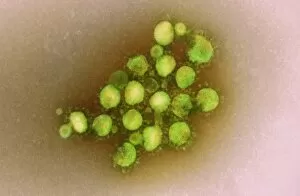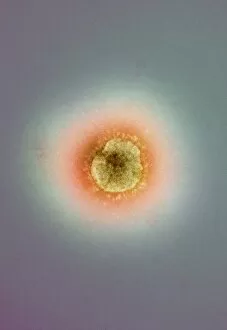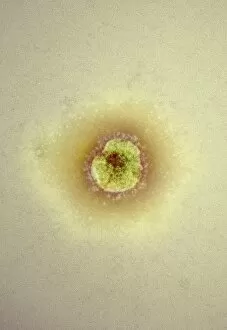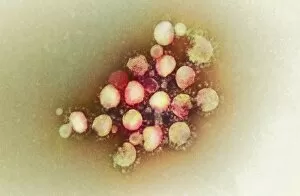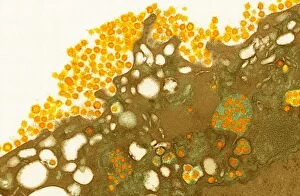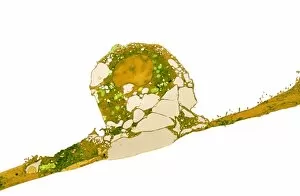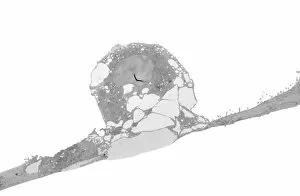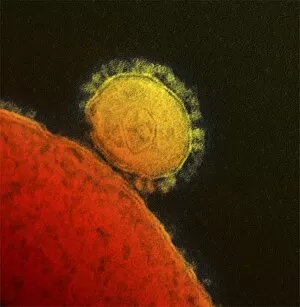Ncov Collection
"Unraveling the Mystery: The MERS Coronavirus (ncov)" Did you know that the MERS coronavirus, also known as ncov, has been extensively studied under various TEM codes
For sale as Licensed Images
Choose your image, Select your licence and Download the media
"Unraveling the Mystery: The MERS Coronavirus (ncov)" Did you know that the MERS coronavirus, also known as ncov, has been extensively studied under various TEM codes? Scientists have delved into its intricate structure and behavior using TEM C015 / 1772, TEM C015 / 1774, TEM C015 / 1776, and many more. These microscopic images have revealed fascinating details about this elusive virus. Through TEM C015 / 7155 and TEM C015 / 7157, researchers have observed the unique morphology of ncov. Its distinctive spike-like projections on its surface give it a crown-like appearance. This characteristic led to its name "coronavirus, " derived from the Latin word for crown. Furthermore, studies conducted with TEM C017 / 8300 shed light on how ncov interacts with host cells. It invades respiratory epithelial cells through specific receptors present in our airways. Understanding these mechanisms is crucial in developing effective treatments or vaccines against this infectious disease. The meticulous examination using advanced imaging techniques like transmission electron microscopy (TEM) has allowed scientists to gain insights into its replication process and pathogenicity. By studying samples labeled as TEM C015/7158 or TEM C015/7156, they've identified key viral proteins involved in hijacking cellular machinery for reproduction. Despite being related to other coronaviruses such as SARS-CoV and SARS-CoV-2 (the cause of COVID-19), ncov exhibits distinct genetic variations that contribute to its unique characteristics and clinical manifestations. Researchers are tirelessly working towards deciphering these differences by comparing different strains labeled under various TEM codes. Thanks to extensive research utilizing transmission electron microscopy techniques like those represented by codes such as MERS coronavirus -TEMC017/8300 or MERS coronavirus -TEMC015/7175; we are gradually uncovering the secrets of ncov.

